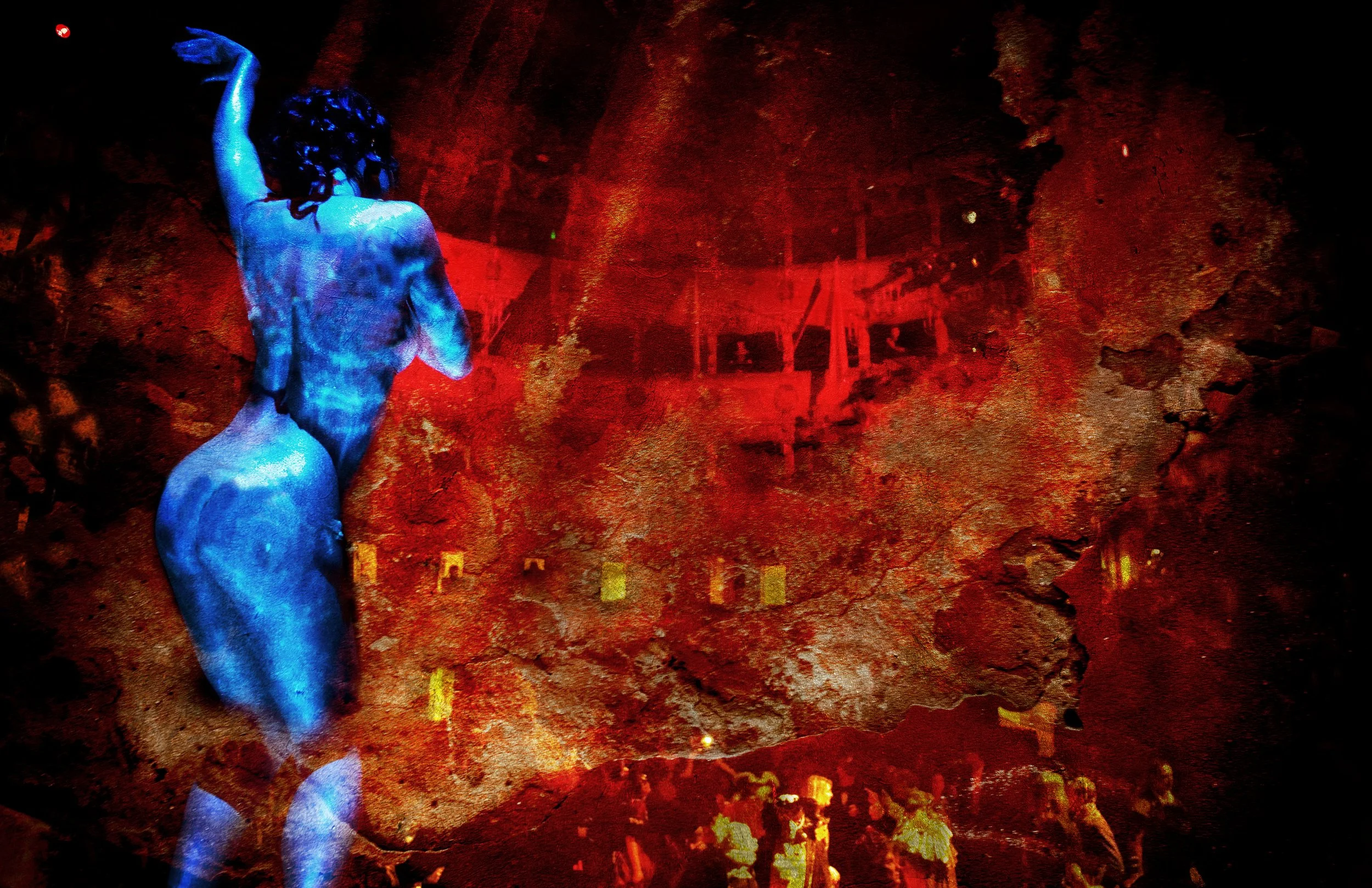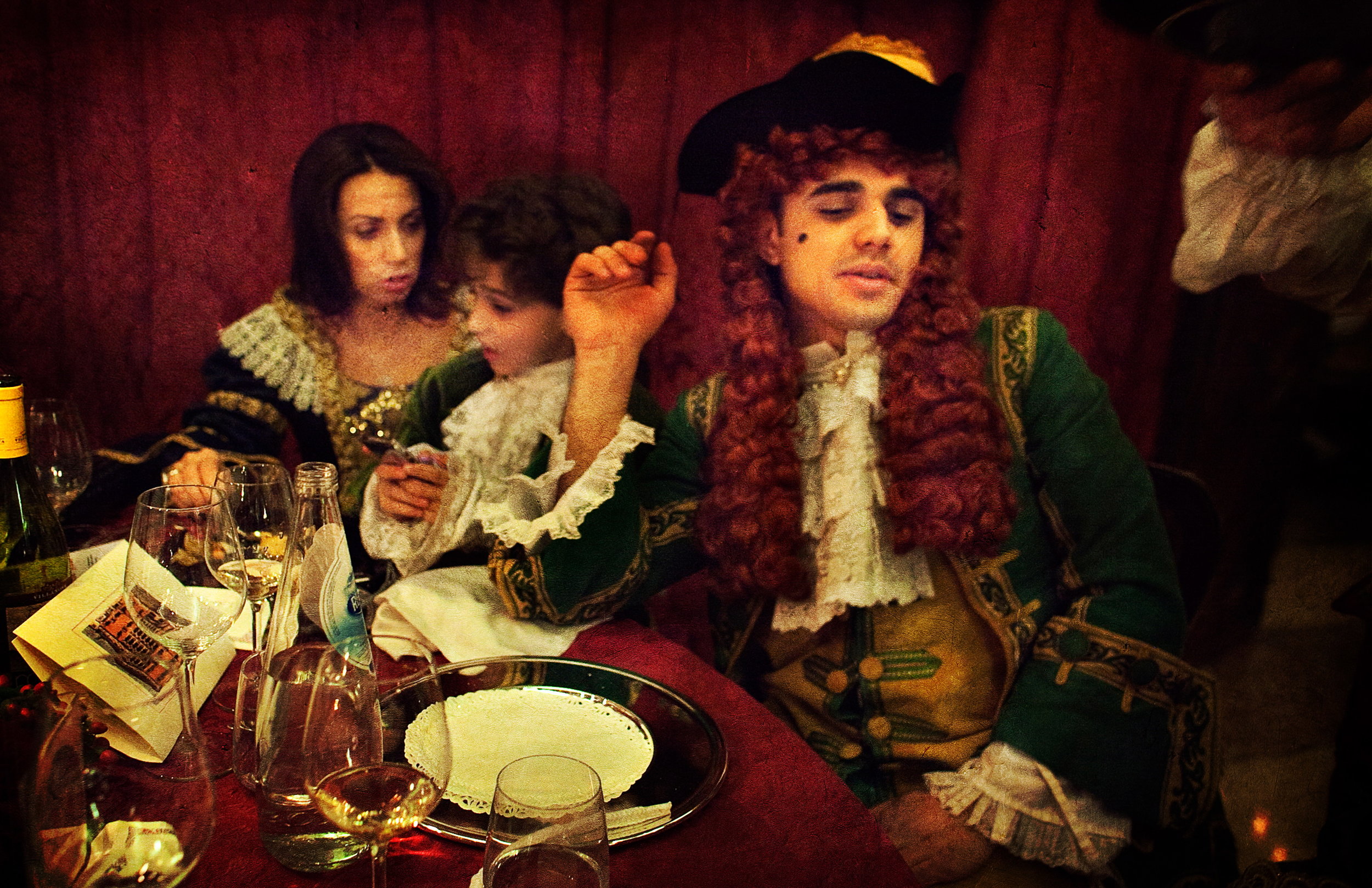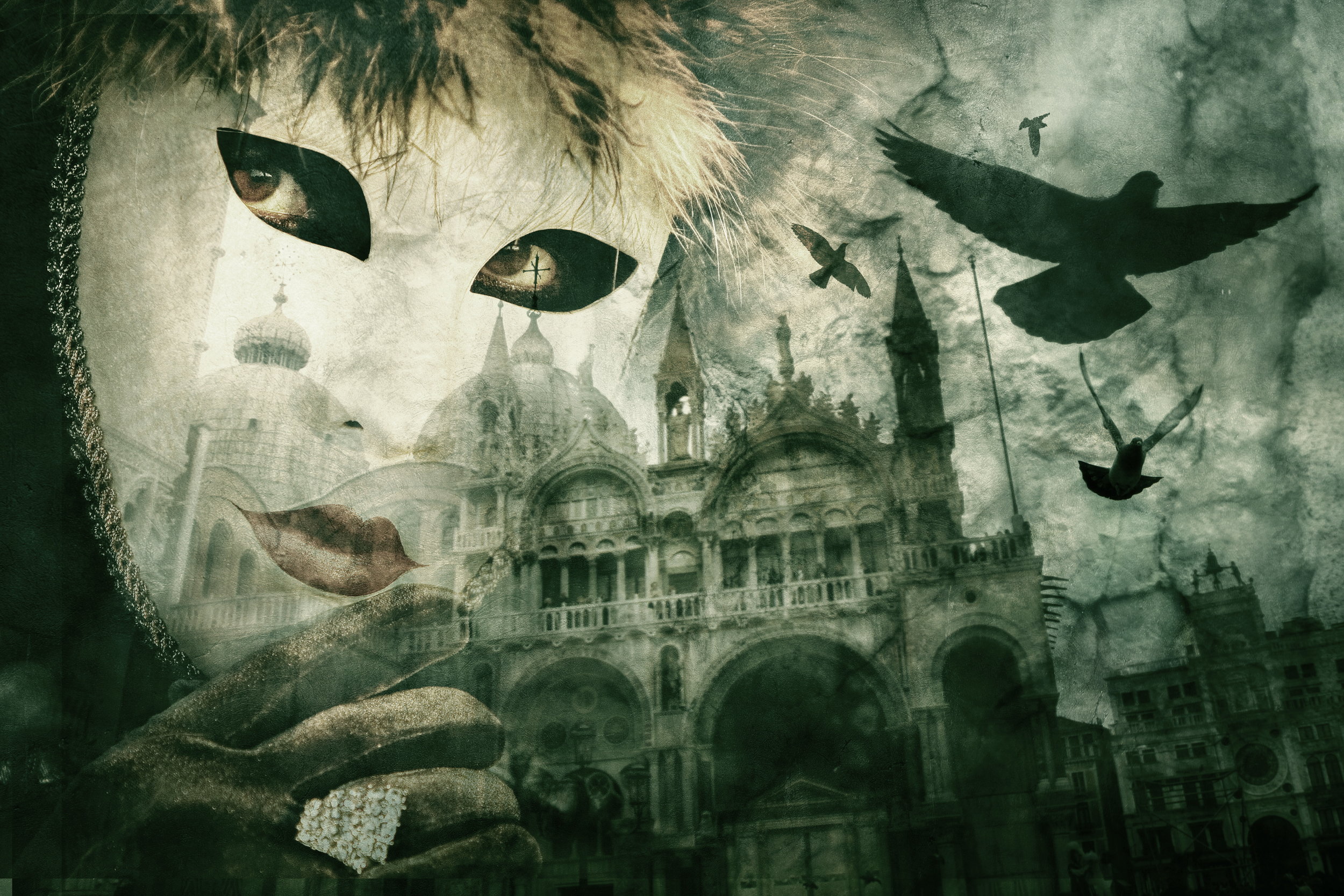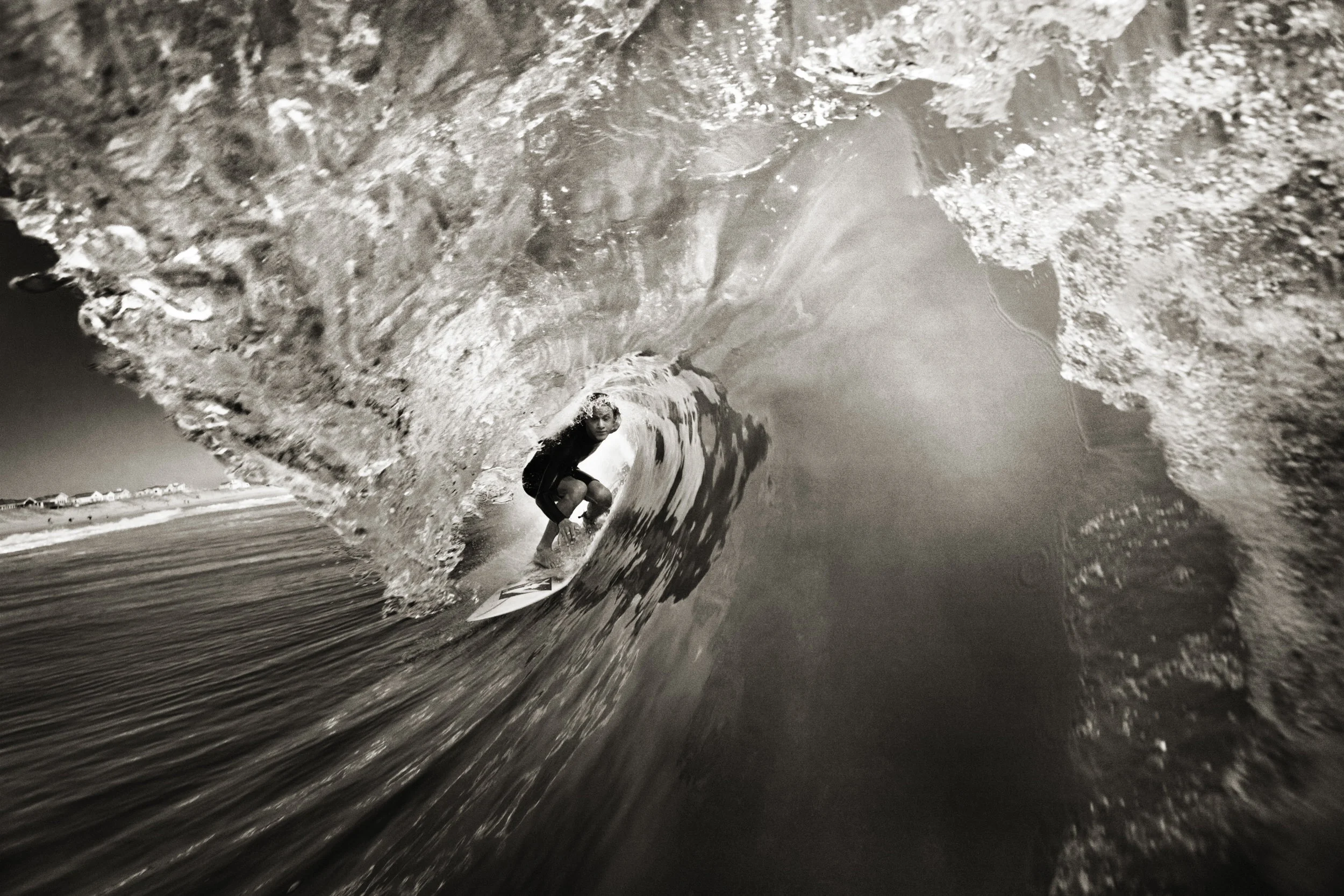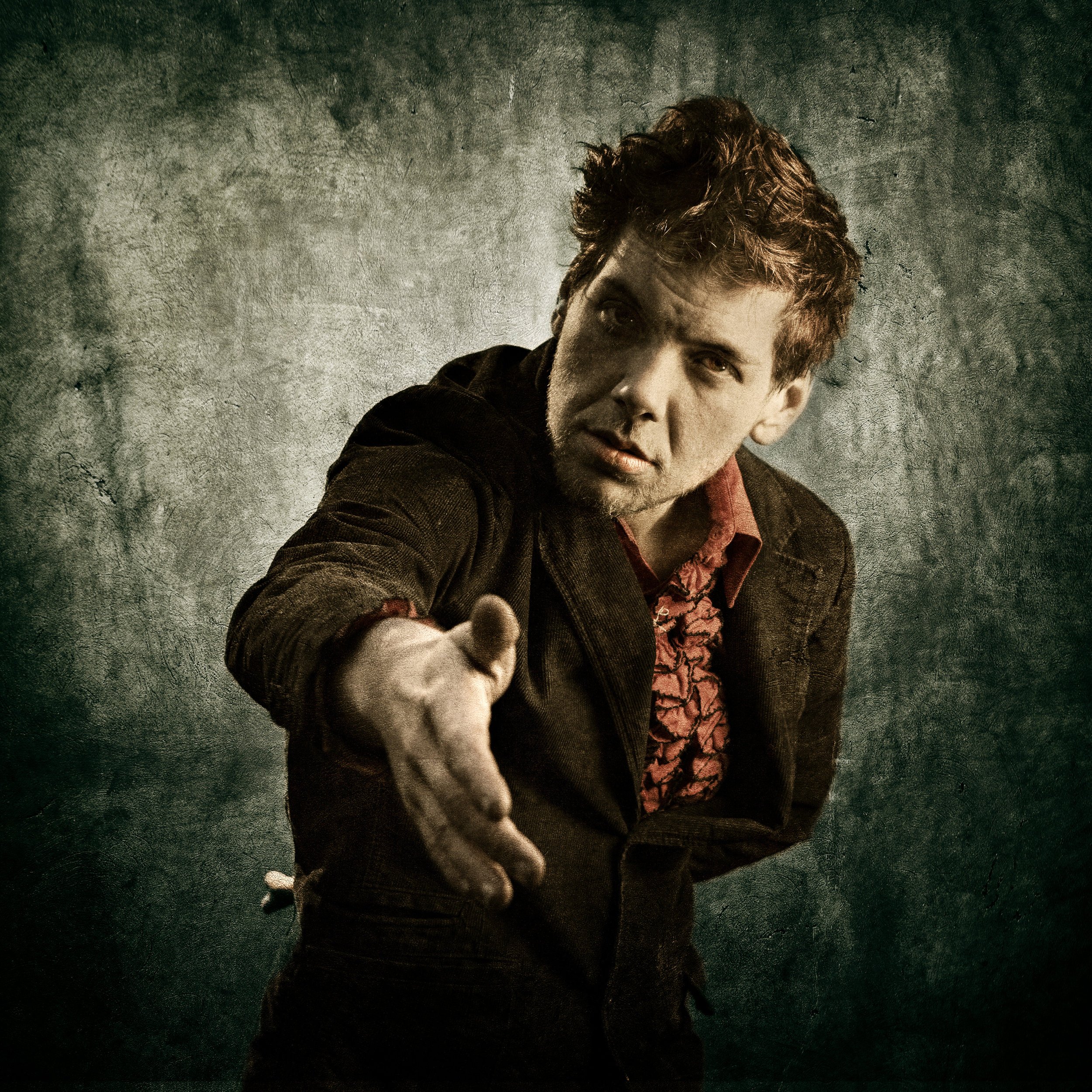Scenes From a Venetian Carnival
©Christipher Bickford'/Unauthorized use prohibited
In the liminal month of February the world’s most ancient and wide-ranging bacchanal kicks into high gear, as millions of revelers across the globe celebrate the ancient rite of Carnival. From Bulgaria to Brazil, from Haiti to India, from Colorado to Trinidad, from Alabama to Australia; in a thousand cities, towns, and villages on six continents, everyday people will don outrageous disguises and step out into a world of of mutually suspended reality. They will set aside their workaday personas to strut their stuff in a mind-boggling array of parades, masquerade balls, and street parties. Swept up into an annual celebration of collective mayhem, the participants of Carnival will lose themselves in a world of fantasy and revelry. Office clerks will become Roman gods. Secretaries from the suburbs will become Amazon queens. CEO’s from uptown will don Harlequin suits and play the Fool. Construction workers from the backstreets will transform into fantastical gangs of Mardi Gras Indians. These dramatis personae and many more will participate in a ritual that has been celebrated every year for over a thousand years, and whose roots reach back deep into the mists of human prehistory. Call it the anti-Christmas if you will, for Carnival celebrates the devil in us all. It upends all traditional roles and realities, and allows our pent-up dreams and fantasies to breathe the sweet air of carnal existence for a brief period of time.
From a psychological point of view, Carnival is often described as a period of sanctioned insanity, when unconscious archetypes and alter-egos are summoned from the dark corners of our souls and given a license to roam free. From an anthropological view, such rites are practiced in a vast diversity of cultures all around the world: fixed expanses of time wherein traditional hierarchies, taboos, and conventions are upended, and the Fool in all of us is permitted a day in the sun.
Or so it should be, in an ideal world. In reality, the spirit of Carnival is often hijacked and controlled by corporate sponsors, private event coordinators, profiteers, and civic restrictions. In its most famous locations, Carnival is big business, and millions of dollars are exchanged for thousands of metric tons of beads, feathers, sequins, and plastic masks. Parade routes are controlled, barriers are erected, police officers enforce order, and street hawkers do brisk business in cheap China-made costumerie. It is the same story the world around: as deep as the urge is to unchain Dionysus and let him dance his wild dance in a mosh-pit of collective ecstasy, even stronger is the heirophantic directive to contain, to control, and to profit from the dark strange energy that he represents. Witness the corporate takeover of rock and roll. The sexualization of advertising. The backfire and bootlegging of Prohibition. We wage constant battle in society between order and chaos; and the pendulum swings back and forth, back and forth, in perpetual motion, in perpetuity.
Carnival as we know it was unofficially adopted by the Catholic Church in the Late Middle Ages, as part of Christianity’s endless campaign to absorb, transform, and co-opt the pagan religious practices of the conquered and converted. In its earliest years, Carnival was actually celebrated inside churches and cathedrals; bishops would dress as women, paupers would be crowned Pope, all of the ecclesiastical establishment would be mocked and lampooned, and unspeakable acts of lechery and debauchery would be committed in plain view of all. Even as holy a temple as Notre-Dame Cathedral in Paris was, during the weeks of Carnival, turned into a den of iniquity.
As the centuries wore on, Carnival evolved into a more secular and civic celebration, and each town and country developed its own traditions and rituals. As European explorers sailed the seas and conquered far-off lands, the rite took root on many a foreign soil, where it grafted itself upon indigenous and imported cultural practices to produce ever-more diverse incarnations and permutations. As Carnival settled into a rut of quaint traditions in Europe, it flourished in North America, South America, and the Caribbean, drawing on the irresistible power of African and Amerindian spiritual practices. Carnival was King in Louisiana, Cuba, Haiti, Trinidad, Brazil. In the Old Country, Dionysus began to hide himself away from the sweeping fascism of the Protestant Reformation, the Catholic Inquisition, and the rise of nation-states.
But one city in Europe continued to celebrate Carnival with ever-more elaborate and decadent enthusiasm: the floating Republic of Venice, gateway to the East, queen of the Adriatic sea. As Venice devolved from the greatest sea-power in the Mediterranean to the most decadent pleasure-den of Europe, its Carnival grew bigger, longer, and more extravagant. At its apex in the eighteenth century, Carnival lasted all winter long, and half the city wore masks in public at all times. Canals would be drained and turned into gardens of earthly delights, and all of Europe’s aristocracy would converge for weeks of masquerade balls, secret trysts, and public spectacles.
Eventually, however, imperialism got the best of the thousand-year Republic. In 1797, Napoleon’s army marched into Venice, looted its most precious talismans, and sold the island to the Austro-Hungarian Empire. Carnival withered into nothing under the disciplinarian rule of Venice’s northern neighbor, and in time it was banned outright.
Carnival slumbered for over a century in Venice, until in 1979 an enterprising coalition of artists, students, and business owners staged a revival. The first few years saw a surge of enthusiasm and growth, as the people of Venice embraced their heritage, unearthed dusty books describing the old celebrations, and created a new Carnival: a strange combination of Italian commedia dell’arte, Roman mythology, eighteenth-century foppery, hand-made ornament, and pure fantasy. Those who played a part in the revival speak of he early days as glory days, full of unbridled creativity, a rediscovery of Venetian identity, and some truly memorable parties. The rest of the world soon took notice, and within no time the Venetian Carnival once again became host to the European aristocracy with lavish balls in ancient palazzos. Along with them came the Eighties jet-set, as well as hordes of college partiers and make-believe enthusiasts from around the world. In the space of ten years the Mask of Carnevale went from virtual non-existence to coronation as the iconic and ubiquitous symbol of Venice.
Nowadays you can’t throw a stone in Venice without hitting a street vendor or window-shop hawking cheap plastic imports of La Maschera; and higher-end boutique stores vie for the title of the “original” mask-makers of Venice. Tourists parade around in nylon clown suits bought earlier in the day for thirty euros; and the coordination of the festival, once run by the city, has now been farmed out to an event-planning company in Milan. Corporate control is ubiquitous: giant ads and massive video screens take over Piazza San Marco, dwarfing the human celebration below. Dionysus has, once again, been bought and subdued.
But still, underneath all the commercialism, crowding, and plastic waste, the spirit of Carnival lives on. It exists in a netherworld between the real and the unreal, and one need only cock one’s head, breathe deeply, and give in to the spirit of mischief and fantasy to find it in Venice. The kids are still holding drum circles under ancient colonnades; the city’s young beauties are still being paraded through the streets and alleys borne on pallets held up by the city’s Gondoliers; and the Angels still fly all over Piazza San Marco, communing with their human consorts over birdseed and stale pastries. Rich internationals still arrive at the water-entrances of ancient palazzos to take part in elaborately-staged balls. And somewhere in an alleyway, a young couple is exploring love, or something close to it. You can find Carnival, if you seek it. You just have to use your imagination.
This photographic series is a fantasy, created from moments of reality wherein fantasies are enacted. It is not so much a document of what Carnival is, as much as a vision of what Carnival dreams itself to be; or, perhaps, what I dream it to be. The images were constructed from a collection of three year’s worth of photographs taken in Venice during the weeks of Carnival. Each image merges a scene from Carnival with a texture from an old wall, a canal reflection, a window display, or perhaps an old church. The visual effect is to marry the make-believe scenarios enacted by contemporary Carnivaliers with the long arm of myth, memory, and history sealed within the weather-worn stones of Venice, creating a dream-like drama that straddles the bookstore categories of historical fiction and fantasy.
In Venice, as in any ancient city, history is etched upon the walls and the walkways. Centuries of the slow creep of decay–a history of floods, storms, deep freezes and crackling summer heat–have painted abstract passion-plays upon the stone and stucco of the city’s architecture. These walls have seen the rise and fall of the Venetian Empire, the flowering and decline and rebirth of Carnival, the countless dramas of one of the world’s most unusual cities being played out on the streets, along the canals, and in the shimmering lagoon that has always been her greatest treasure. As they say, if these walls could talk, well they’d probably tell the gondoliers to stop singing “O Sole Mio” for Chrissake. When I first began compositing images together in this way, I had no real intention or understanding of what I was doing. It was simply one of those ideas you get, lying in bed, waiting for Morpheus to take you across the bridge of consciousness. But as the first few images began to take shape, I sensed that I was on to something, and I have continued on, without any pre-determined method, combining images and blending them in various modes and levels of opacity, just seeing what happens. Some combinations work, some don’t. Some to me seem utterly sublime, whereas others are more gateways, storytelling devices, ways of filling out the picture. You will notice that some of the images border on the abstract and surreal, whereas others merely add a painterly texture to a more or less realistic image. Towards the completion of a series for presentation, my aims have been geared mostly towards consistency, flow, and color balance, as I have worked to create a kind of a journey that has cohesion as well as variety, and which moves in and out between the sacred and the mundane, between the real and the surreal.
This project, thus, is a gift from the collective imagination, through my imagination , to your imagination. Perhaps it will inspire you to find Carnival in your own time, in your own place, in your own mind. Many adventures to you, and may you keep your dreams alive.


